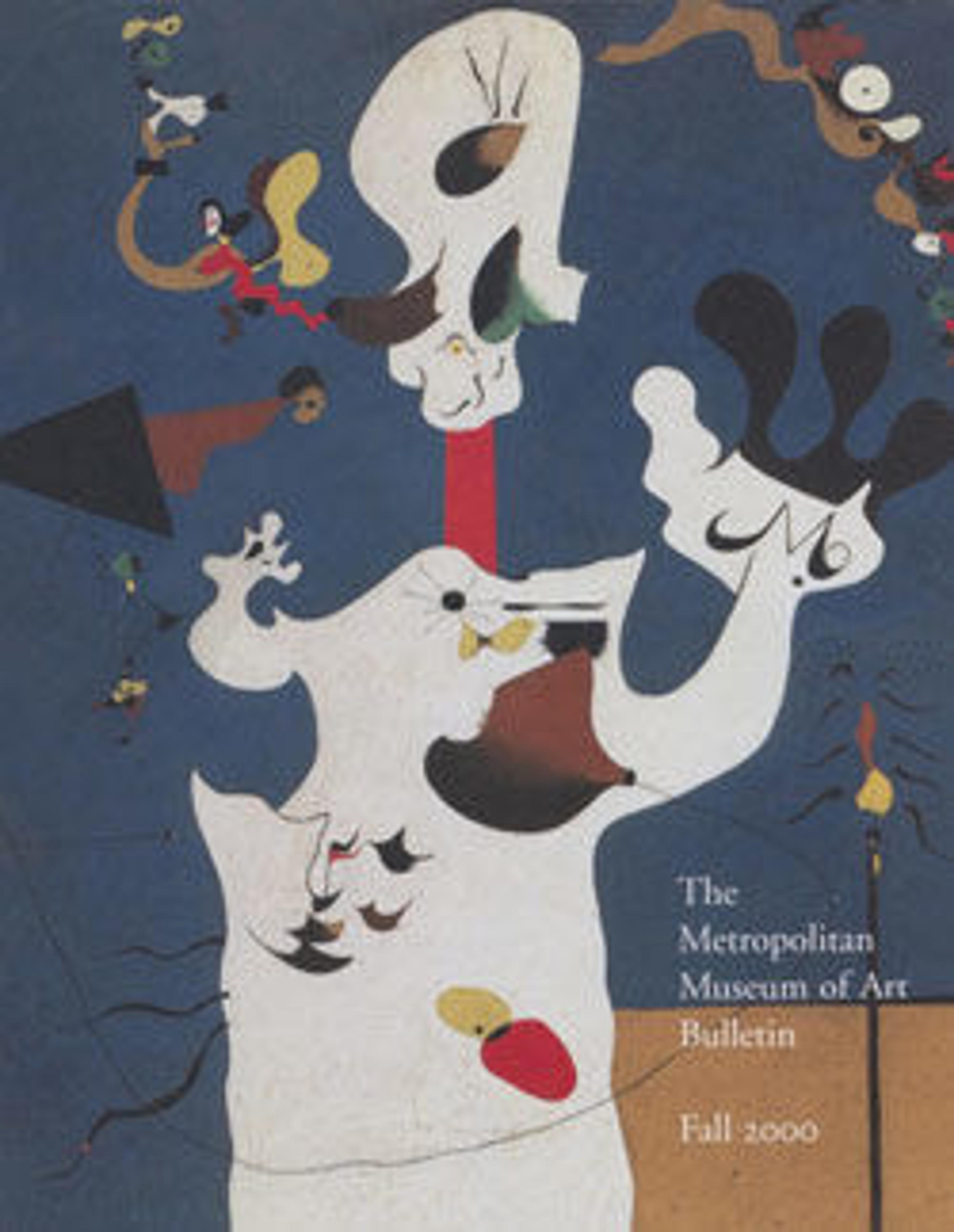Bottle
Doat was among the earliest ceramists to use pate-sur-pate, the technique of creating translucent low-relief compositions from layers of porcelain slip. First produced at Sèvres in 1849, it became a central feature of Doat's work, both at the national manufactory, where he was employed from 1877 to 1905, and in his own atelier nearby, the Villa Kaolin. Uninterested in the current fashion for japonisme, Doat chose allegorical or whimsical subjects, frequently setting them as plaques on a stoneware body, the sheen of the porcelain contrasting effectively with the rougher texture of the ground. On this bottle two oblong plaques depict children picking grapes and apples, while a wineglass and cider jug are seen in medallions below the handles. As if to emphasize the peasant-flask character of the model, the plaques have been attached to the body by porcelain thongs. This is one of three known examples of the model; one, now in the Musee des Arts Decoratifs, Paris, was exhibited in 1902 with the title "Champagne et Normandie."
Artwork Details
- Title:Bottle
- Maker:Studio of Taxile Maximin Doat (French, 1851–1938)
- Date:ca. 1902
- Culture:French, Sèvres
- Medium:Hard-paste porcelain
- Dimensions:Height: 9 1/2 in. (24.1 cm)
- Classification:Ceramics-Porcelain
- Credit Line:Bequest of Robert Louis Isaacson, 1998
- Object Number:1999.179a, b
- Curatorial Department: European Sculpture and Decorative Arts
More Artwork
Research Resources
The Met provides unparalleled resources for research and welcomes an international community of students and scholars. The Met's Open Access API is where creators and researchers can connect to the The Met collection. Open Access data and public domain images are available for unrestricted commercial and noncommercial use without permission or fee.
To request images under copyright and other restrictions, please use this Image Request form.
Feedback
We continue to research and examine historical and cultural context for objects in The Met collection. If you have comments or questions about this object record, please contact us using the form below. The Museum looks forward to receiving your comments.
